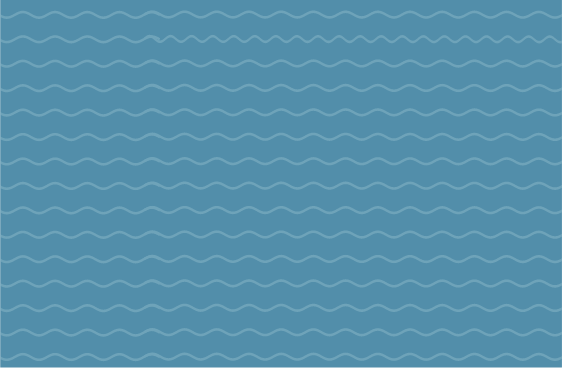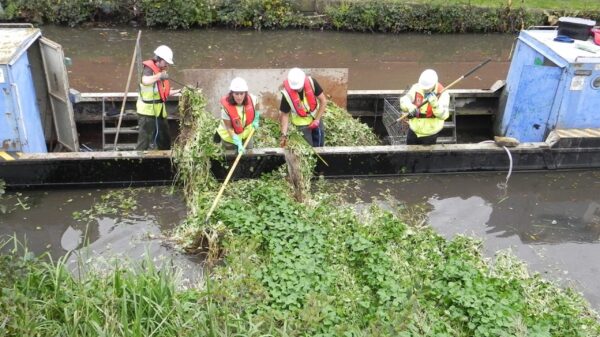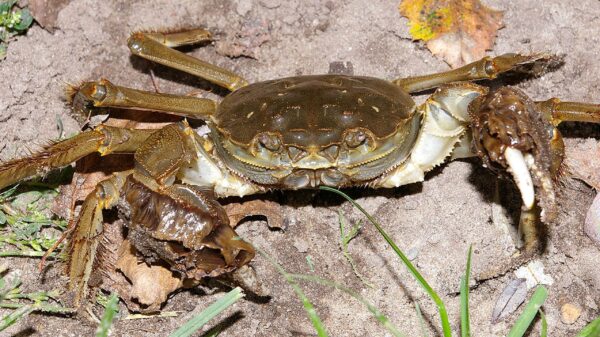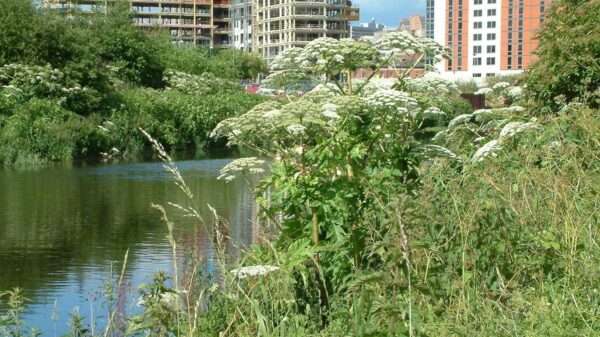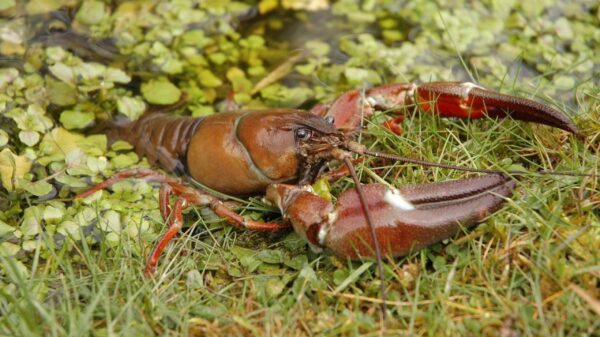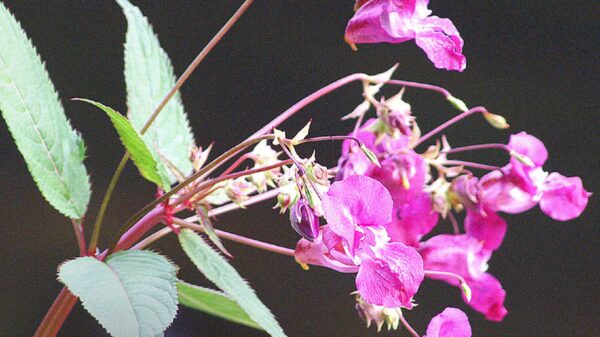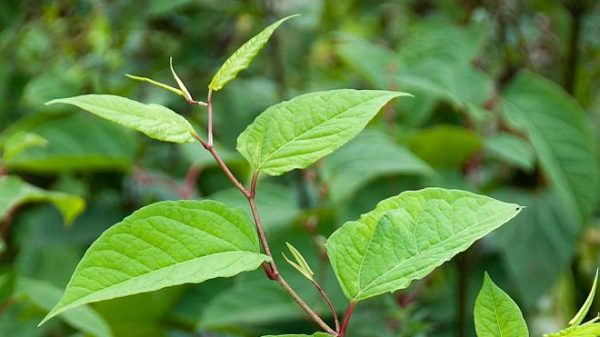Restoration Hub > Environmental Toolkit > Chinese Mitten Crab (Eriocheir sinensis)
Restoration Hub
Chinese Mitten Crab (Eriocheir sinensis)
Introduction
First recorded in 1953 in the River Thames, Chinese Mitten Crabs are officially listed as one of the World’s 100 worst invasive species. Native to both East Asia and East Europe, these invaders are believed to have hitched a ride in ballast water from shipping vessels. Chinese Mitten Crabs are recorded in rivers, brackish water and estuaries but rarely along the marine inshore coast. These invasives are a voracious predator and will hunt native bottom dwelling invertebrate populations.
Description
A large crab has a maximum carapace (body) length of 56 mm with a fairly squire body outline narrowing towards the front. The most distinctive features are a dense mat of hair on their claws and hair on the edges of their legs. The Crabs are olive green in colour with paler legs that extend to twice the length of their body.
Habitat
Chinese Mitten Crabs are the only crab found in the UK to live in freshwater. They start life in lower estuaries and marine habitats, then move upstream into freshwater and brackish streams as they develop into adults. This species of crab an be found burrowing into the side of muddy riverbanks and streams.
Reproduction
Reproduction takes place in deep, open saltwater environments. Females are known to carry between 250,000 – 1,000,000 eggs under their abdomen. Once breeding has taken place between October and February, males will return upstream and females deeper in tidal estuaries. The juveniles, once developed, will migrate upstream too.
Dispersal
These Crabs are common in the River Thames and River Medway, with isolated records from River Tyne (Newcastle), the River Tamar (near Plymouth) and recently Dungeness, Kent. Sightings have also been recorded from Southfields Reservoir near Castleford, Yorkshire. However, this species is spreading very rapidly across the UK.
Why is it a problem?
They can cause damage to fishing gear and river banks, modify natural habitats and compete with native species.
The environmental impact has not been fully understood yet but it is likely to impact native, benthic invertebrate populations in freshwater and marine systems, through predation and competition. Increased risk from siltation on gravel runs may also impact salmon and trout spawning. There is also a risk that they can out compete native white-clawed crayfish.
Similarly, the economic impact is not fully understood of yet, however damage associated from burrowing on river banks could lead to higher costs in river bank maintenance, land reclamation and repairing flood defences.
The economic and ecological damage is what makes this crab an unwelcome arrival. The full extent of these exotic pests in English and Welsh waters is currently unclear and a consortium of research institutes is requesting mitten crab sightings from members of the public, anglers and waterway workers, to clarify the distribution of this species.
Biosecurity
Biosecurity is currently the best defence against further spread of the Chinese Mitten Crab. Waterway users have a key role in reducing the risk of spreading the disease by following the Non-Native Species Secretariat (NNSS) Check, Clean, Dry Policy.
Anglers
Dry or disinfect any boots or equipment before moving between waterways. Avoid fishing different waterways on the same day.
Boaters
If removing your boat from a waterway, check the bilge and interior for any obvious crabs and flush the engine cooling system through with fresh water from a piped supply.
Canoeists
Drain the boat as usual and check the interior for any crabs. If possible flush the boat out with fresh water from a piped supply.
Under the Wildlife and Countryside Act 1981 (as amended), it is an offence to release, or allow to escape, any non-native species into the wild in the UK except under licence. If a Chinese Mitten Crab is caught – bring it ashore or into the boat for humane destruction.
If everyone who uses or works in or around water (including fishermen, boaters and contractors), practices good biosecurity, it will prevent the transfer of animals or eggs between waters.
Check, Clean, Dry
Find out more about how you can help stop the spread of invasive aquatic species at the GB Non-Native Species Sectariat (NNSS) website.
Our use of cookies
We use necessary cookies to make our site work. We'd also like to set optional analytics cookies to help us improve it. For more detailed information about the cookies we use, see our 'Cookie Policy page'.Edit preferences Accept
Privacy Overview
| Cookie | Duration | Description |
|---|---|---|
| __stripe_mid | 1 year | Stripe sets this cookie to process payments. |
| __stripe_sid | 30 minutes | Stripe sets this cookie to process payments. |
| cookielawinfo-checkbox-advertisement | 1 year | Set by the GDPR Cookie Consent plugin, this cookie records the user consent for the cookies in the "Advertisement" category. |
| cookielawinfo-checkbox-analytics | 1 year | Set by the GDPR Cookie Consent plugin, this cookie records the user consent for the cookies in the "Analytics" category. |
| cookielawinfo-checkbox-functional | 1 year | The GDPR Cookie Consent plugin sets the cookie to record the user consent for the cookies in the category "Functional". |
| cookielawinfo-checkbox-necessary | 1 year | Set by the GDPR Cookie Consent plugin, this cookie records the user consent for the cookies in the "Necessary" category. |
| cookielawinfo-checkbox-others | 1 year | Set by the GDPR Cookie Consent plugin, this cookie stores user consent for cookies in the category "Others". |
| cookielawinfo-checkbox-performance | 1 year | Set by the GDPR Cookie Consent plugin, this cookie stores the user consent for cookies in the category "Performance". |
| CookieLawInfoConsent | 1 year | CookieYes sets this cookie to record the default button state of the corresponding category and the status of CCPA. It works only in coordination with the primary cookie. |
| PHPSESSID | session | This cookie is native to PHP applications. The cookie stores and identifies a user's unique session ID to manage user sessions on the website. The cookie is a session cookie and will be deleted when all the browser windows are closed. |
| Cookie | Duration | Description |
|---|---|---|
| _fbp | 3 months | Facebook sets this cookie to display advertisements when either on Facebook or on a digital platform powered by Facebook advertising after visiting the website. |
| _ga | 1 year 1 month 4 days | Google Analytics sets this cookie to calculate visitor, session and campaign data and track site usage for the site's analytics report. The cookie stores information anonymously and assigns a randomly generated number to recognise unique visitors. |
| _ga_* | 1 year 1 month 4 days | Google Analytics sets this cookie to store and count page views. |
| _gat_gtag_UA_* | 1 minute | Google Analytics sets this cookie to store a unique user ID. |
| _gat_UA-* | 1 minute | Google Analytics sets this cookie for user behaviour tracking.n |
| _gid | 1 day | Google Analytics sets this cookie to store information on how visitors use a website while also creating an analytics report of the website's performance. Some of the collected data includes the number of visitors, their source, and the pages they visit anonymously. |
| CONSENT | 2 years | YouTube sets this cookie via embedded YouTube videos and registers anonymous statistical data. |
| Cookie | Duration | Description |
|---|---|---|
| test_cookie | 15 minutes | doubleclick.net sets this cookie to determine if the user's browser supports cookies. |
| VISITOR_INFO1_LIVE | 5 months 27 days | YouTube sets this cookie to measure bandwidth, determining whether the user gets the new or old player interface. |
| YSC | session | Youtube sets this cookie to track the views of embedded videos on Youtube pages. |
| yt-remote-connected-devices | never | YouTube sets this cookie to store the user's video preferences using embedded YouTube videos. |
| yt-remote-device-id | never | YouTube sets this cookie to store the user's video preferences using embedded YouTube videos. |
| yt.innertube::nextId | never | YouTube sets this cookie to register a unique ID to store data on what videos from YouTube the user has seen. |
| yt.innertube::requests | never | YouTube sets this cookie to register a unique ID to store data on what videos from YouTube the user has seen. |

